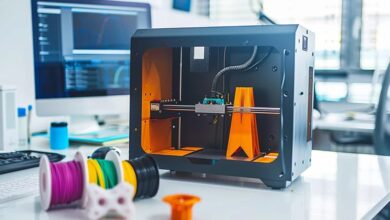Recreating history with additive manufacturing
Additive manufacturing solutions company Stratasys teamed with Atlanta’s Millennium Gate Museum to 3D print one of the rarest pieces of art in Ancient Greece. Working alongside the 3DCenter at Kennesaw State University and by using a Stratasys Fortus 900mc Production 3D printer, the team unveiled a near-exact 3D printed replica of one of the ‘Seven Wonders of the Ancient World’ – the Statue of Zeus at Olympia. This project represents one of the larger 3D printed classical works re-created via advanced Fused Deposition Modeling (FDM).
Imagined by sculptor Phidias in 432 B.C., the initial structure was designed on a wood frame with gold and ivory panels. Taking more than 12 years to construct, the ancient statue honored King of the Greek Gods, Zeus. It was destroyed in a fire during the 5th Century A.D., and artists and historians have struggled to recreate its presence for modern times. With a unique ability to maximize production-grade thermoplastics to create strong, dimensionally stable, and accurate 3D printed parts – Stratasys Fused Deposition Modeling (FDM) 3D printing technology was the impetus to overcome these challenges.
According to Stratasys, the Fortus 900mc Production 3D Printer enables artists can build large parts with an enhanced degree of speed and scale – up to 3x faster than traditional 3D processes. Offering maximum flexibility, creators can easily fine-tune performance and speed – achieving more realistic parts, generating complex designs and producing the smooth finish artwork requires. With the durability of production-grade thermoplastics, museum creators of the Statue of Zeus at Olympia were guaranteed the resulting statue was highly stable to remain intact during the most challenging environments.
Based on an initial image of the piece, designers translated the rendering into a CAD file using 3D modeling software. Actual production was achieved via an additive approach – laying successive material layers until the 3D print was complete. With the final replica standing at 6 feet tall, the work is being unveiled in conjunction with the 20th anniversary of the Atlanta Centennial Olympic Games.
“Throughout history, there are always instances where the most precious works of art get destroyed or broken. In the past, this disappearance meant items were lost forever. That’s why we’re so heavily invested in the artistic value of 3D printing,” said Jeremy Kobus, director of The Gate Museum. “Committed to working at the intersection of technology and art, we see the tremendous potential of 3D printing for educational applications. Teaming with Stratasys and KSU’s 3DCenter, our hope is to deliver creations far too few have even tried to attempt.”
“Artists around the world are being liberated by the full-fledged realism made possible by Stratasys 3D printing technology. Having the capacity to design and 3D print using highly durable materials with complex geometries and the highest levels of accuracy, museums can re-introduce some of history’s most treasured works,” said Sig Behrens, general manager of global education, Stratasys. “Teaming with Stratasys, institutions are completely transforming education and learning – as students and museum visitors are now able to grasp the power of forgotten classic art. 3D printing is the very impetus sparking a highly realistic learning experience – ensuring these essential pieces of history are never again forgotten.”





